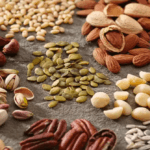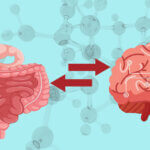Introduction of Demystifying Parkinson’s Disease
Millions of people throughout the world suffer from Parkinson’s disease, a complicated neurological ailment whose effects go well beyond the physical. This summary of causes of Parkinson’s disease, symptoms, diagnosis, and treatment seeks to demystify the disease. We’ll delve into the complexities of this illness, illuminating the current state of knowledge regarding its underlying causes and revealing the difficulties faced by Parkinson’s patients and those who care for them. We may endeavor to enhance the quality of life for those who are afflicted by Parkinson’s disease via education and understanding and providing the best Parkinson’s disease treatment in India at Jaslok Hospital.
Understanding Parkinson’s Disease
According to the doctors at our hospital for Parkinson’s disease in Mumbai Parkinson’s disease is a progressive neurological disorder characterized by the gradual loss of dopamine-producing cells in the brain. This leads to motor symptoms like tremors, slowness of movement, muscle rigidity, and impaired balance. It can also cause non-motor symptoms like mood changes and cognitive decline. Although there is no cure, medications, and therapies can alleviate symptoms and enhance the quality of life for those with Parkinson’s. Furthermore, Exercise can enhance gait, balance, tremor, flexibility, grip strength, and motor coordination, according to research. Parkinson’s disease physical exercise like Tai Chi and yoga, as well as riding and treadmill training, have all been demonstrated to be beneficial.
Causes and Risk Factors
According to the Parkinson’s doctor, exact causes of Parkinson’s disease remains elusive, but a combination of genetic and environmental factors is believed to contribute. Genetic mutations can play a role, and exposure to certain toxins or head injuries may increase the risk. Age is a primary risk factor, with the majority of cases occurring in individuals over 60. Understanding these factors can aid in early detection and management of the disease.
Genetic Factors
The doctors at our Parkinson’s disease treatment clinic in Mumbai guide how Genetic factors can cause Parkinson’s disease, with some cases linked to specific gene mutations. Mutations in genes like LRRK2, SNCA, and PARKIN have been identified in a subset of patients, increasing their susceptibility to the condition. However, these genetic factors are not the sole cause, as most Parkinson’s cases have a complex, multifactorial origin involving a combination of genetic and environmental influences.
Environmental Factors
Environmental factors are believed to contribute to the development of Parkinson’s disease. Exposure to certain toxins, such as pesticides, herbicides, and industrial chemicals, has been associated with an increased risk of the disease. Head injuries and living in rural areas with well water sources containing higher levels of pesticides are also potential environmental risk factors. However, our doctors for Parkinson’s disease treatment in India say the interplay between genetics and the environment in Parkinson’s remains complex and not fully understood.
Recognizing the Symptoms
According to doctors, early diagnosis of Parkinson’s disease is essential for effective treatment. Common signs include tremors, especially at rest, slowness of movement, muscle rigidity, and impaired balance or coordination. Individuals may also experience changes in handwriting, reduced facial expression, and soft speech. Non-motor symptoms like mood changes, sleep disturbances, and constipation can also occur. Early detection and management of symptoms can enhance the quality of life.
Motor Symptoms
Motor symptoms are a hallmark of Parkinson’s disease and include tremors, particularly at rest, slowness of movement (bradykinesia), muscle stiffness (rigidity), and postural instability, which can lead to balance problems and falls. These signs are a result of the brain’s dopamine-producing cells dying. While they can be managed in hospitals with their medication and therapies, progressively worsen over time, making early diagnosis and intervention crucial for improving quality of life.
Non-Motor Symptoms
Parkinson’s disease presents not only with motor symptoms but also a range of non-motor issues. These may include mood disturbances like depression and anxiety, cognitive changes such as memory and thinking problems, and sleep disturbances like insomnia or restless legs. Non-motor symptoms can significantly impact an individual’s quality of life and often require specific management approaches alongside those for motor symptoms to provide comprehensive care.
Diagnosis and Medical Assessments
Diagnosing Parkinson’s disease involves a thorough medical assessment. Neurologists typically evaluate a patient’s medical history, perform a comprehensive physical examination to assess motor symptoms, and may use specialized tests like the UPDRS (Unified Parkinson’s Disease Rating Scale) to quantify symptom severity. Brain imaging scans such as MRI or DaTscan can help rule out other conditions. Early diagnosis is critical for implementing appropriate treatment strategies and improving outcomes
Neurological Examinations
The top Parkinson’s doctor in Mumbai at our clinic instructs that neurological examinations are crucial in diagnosing Parkinson’s disease. They involve assessing various aspects of a patient’s motor function, including muscle strength, reflexes, coordination, and posture. Specific tests like the UPDRS (Unified Parkinson’s Disease Rating Scale) are often used to quantify symptom severity. The presence of resting tremors, bradykinesia (slowness of movement), muscle rigidity, and postural instability are key indicators. These examinations help neurologists differentiate Parkinson’s from other neurological conditions.
Imaging Tests
Imaging tests play a valuable role in the diagnosis of Parkinson’s disease. Brain imaging, like MRI or DaTscan, can reveal structural changes or dopamine transporter deficits that support the diagnosis and rule out other conditions with similar symptoms. These tests help the Parkinson’s doctors to confirm the presence of Parkinson’s disease, especially in cases where clinical assessments may be inconclusive or to differentiate it from other neurological disorders.
Treatment Approaches for Parkinson’s
The doctors for Parkinson’s disease treatment in India have involved a multidisciplinary approach to get the diagnosis of Parkinson’s disease. Levodopa and dopamine agonists are two drugs that can aid with motor problems. Physical and occupational therapy can enhance mobility and daily functioning. In advanced cases, deep brain stimulation (DBS) surgery may be considered to control symptoms. Additionally, lifestyle modifications and support from healthcare professionals play a crucial role in enhancing the quality of life for individuals living with Parkinson’s disease.
Medications
The experts at our hospital for Parkinson’s disease in Mumbai say medications are a cornerstone of Parkinson’s disease treatment. Levodopa and dopamine agonists, such as carbidopa-levodopa and pramipexole, aim to replenish dopamine levels in the brain and alleviate motor symptoms. Other drugs like anticholinergics and amantadine can provide additional symptom relief. The choice and dosage of medications are tailored to individual needs, and adjustments are often made over time to manage symptoms effectively while minimizing side effects.
Therapies
The Parkinson’s disease treatment is crucial for controlling Parkinson’s disease. Mobility, balance, and muscle strength can all be enhanced with physical therapy. Daily living issues are addressed in occupational therapy. Speech therapy helps to manage issues with swallowing and speech. Parkinson’s disease physical exercise regimens and activities like dance or tai chi can also improve general well-being. These treatments help Parkinson’s patients become more functionally independent and improve their quality of life. They are frequently included in comprehensive care plans.
Surgical Interventions
Surgical interventions are considered for individuals with advanced Parkinson’s disease when medications are no longer providing adequate symptom control. Deep brain stimulation for Parkinson’s disease surgery involves implanting electrodes in specific brain regions to modulate abnormal neuronal activity. DBS can considerably lessen symptoms related to movement and enhance quality of life. It’s typically considered when medication adjustments and other therapies no longer suffice to manage symptoms effectively.
Lifestyle Adjustments for Living with Parkinson’s
Lifestyle adjustments are crucial when living with Parkinson’s disease. Our top Parkinson’s doctor in Mumbai suggests Regular exercise, including aerobic and strength training, helps maintain mobility and balance. A well-balanced diet supports overall health. Adequate sleep and stress management are essential. Staying socially active and seeking support from friends, family, and support groups can provide emotional support. Adhering to medication schedules and regular medical check-ups are vital components of managing Parkinson’s effectively.
Exercise
As per the doctors at our Parkinson’s disease treatment clinic in Mumbai, exercise is a fundamental component of Parkinson’s disease management. Regular physical activity, including aerobic exercises, strength training, and balance exercises, can help improve mobility, flexibility, and muscle strength. It also enhances mood and overall well-being. Tailored exercise programs, often supervised by physical therapists, are essential for maintaining functional independence and managing motor symptoms. Parkinson’s disease physical exercise is an integral part of a holistic approach to Parkinson’s care.
Diet
According to the experts hospital for Parkinson’s disease in Mumbai, a balanced diet is vital for individuals with Parkinson’s disease. A variety of fruits, vegetables, lean meats, entire grains, and good fats should all be present. Adequate hydration is crucial. Some may benefit from adjustments like smaller, more frequent meals to manage swallowing difficulties. It’s also important to monitor protein intake to optimize the effectiveness of medications. A well-planned diet contributes to overall health and helps manage Parkinson’s symptoms.
Daily Routines
The neurologists at our Parkinson’s disease treatment clinic in Mumbai state that establishing daily routines can provide stability and enhance the quality of life for individuals with Parkinson’s disease. Consistency in medication schedules is vital for symptom management. Incorporating physical exercise, cognitive stimulation, and relaxation techniques into the daily routine can help maintain physical and mental well-being. Prioritizing good nutrition, adequate rest, and support from loved ones contribute to a balanced and fulfilling life while living with Parkinson’s.
Support Systems and Coping Strategies
Support systems and coping strategies are invaluable for individuals with Parkinson’s disease. This may include involvement in support groups, where sharing experiences and advice can provide emotional relief. Maintaining open communication with doctors for Parkinson’s disease treatment to ensure optimal care. Engaging in hobbies and activities that bring joy helps combat feelings of isolation. Adapting one’s mindset, practicing patience, and seeking emotional support from loved ones are crucial coping strategies in managing Parkinson’s.
Navigating Daily Life with Parkinson’s
Navigating daily life with Parkinson’s disease involves a multifaceted approach. Prioritizing medication schedules is vital to manage symptoms effectively. The benefits of regular exercise, a healthy diet, and sufficient rest are felt throughout the body. Simplifying daily tasks and using assistive devices can enhance independence. As per the best Parkinson’s disease treatment clinics, emotional support from family, friends, and support groups can alleviate the emotional toll. Adaptive strategies and a positive mindset are key to living a fulfilling life with Parkinson’s.
Practical Tips and Considerations
Practical tips for living with Parkinson’s include organizing medications with pill dispensers, using mobility aids when needed, and installing handrails and grab bars at home. Prioritize safety by reducing clutter and improving lighting. Communication tools like speech therapy can help manage speech difficulties. Keep an updated list of medications and Parkinson’s doctor contacts. Finally, exercise regularly and mentally regularly and maintain an active social life to support overall well-being.
Parkinson’s disease is a complex neurological condition that affects not only movement but also various aspects of daily life. While there is no cure, a multidisciplinary approach involving medication, therapy, lifestyle adjustments, and a strong support system can significantly improve the quality of life for those with Parkinson’s. Early diagnosis, understanding the disease’s progression, and staying informed about available treatments are key. By demystifying Parkinson’s, we empower individuals and their families to navigate this journey with resilience, hope, and the knowledge that they are not alone in facing this challenge.
Discover how to recognize early signs of Parkinson’s symptoms in our blog post: Parkinson’s Symptoms: How to Recognize Early Signs
Best Parkinson’s Disease Treatment Clinic in India
Department of Neurological Surgery at Jaslok Hospital is one of the best Parkinson’s disease treatment clinics in India. The clinic uses a multidisciplinary approach to provide complete care for individuals with Parkinson’s disease that considers both medicinal and surgical therapies. Experienced neurosurgeons and neurologists work together to offer advanced treatments at our Parkinson’s disease treatment clinic in Mumbai, India such as Deep Brain Stimulation (DBS) and Botulinum toxin injections. Each patient receives individualized care from the team, with an emphasis on raising the condition’s overall management and quality of life.






